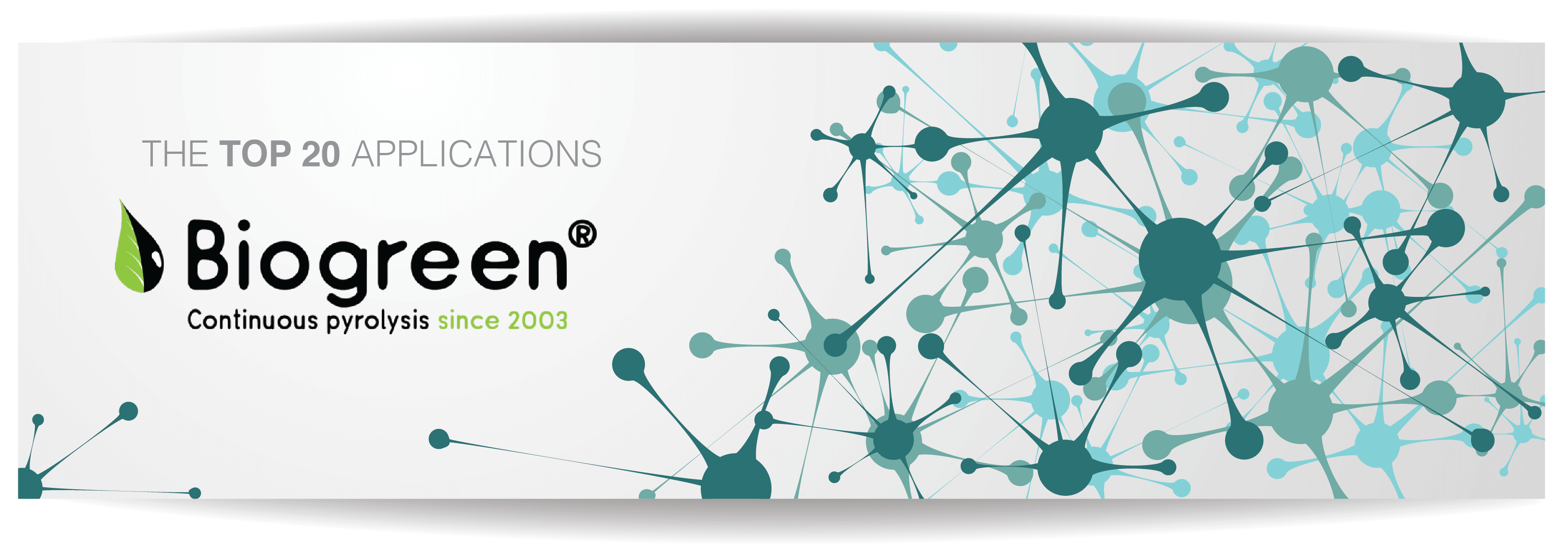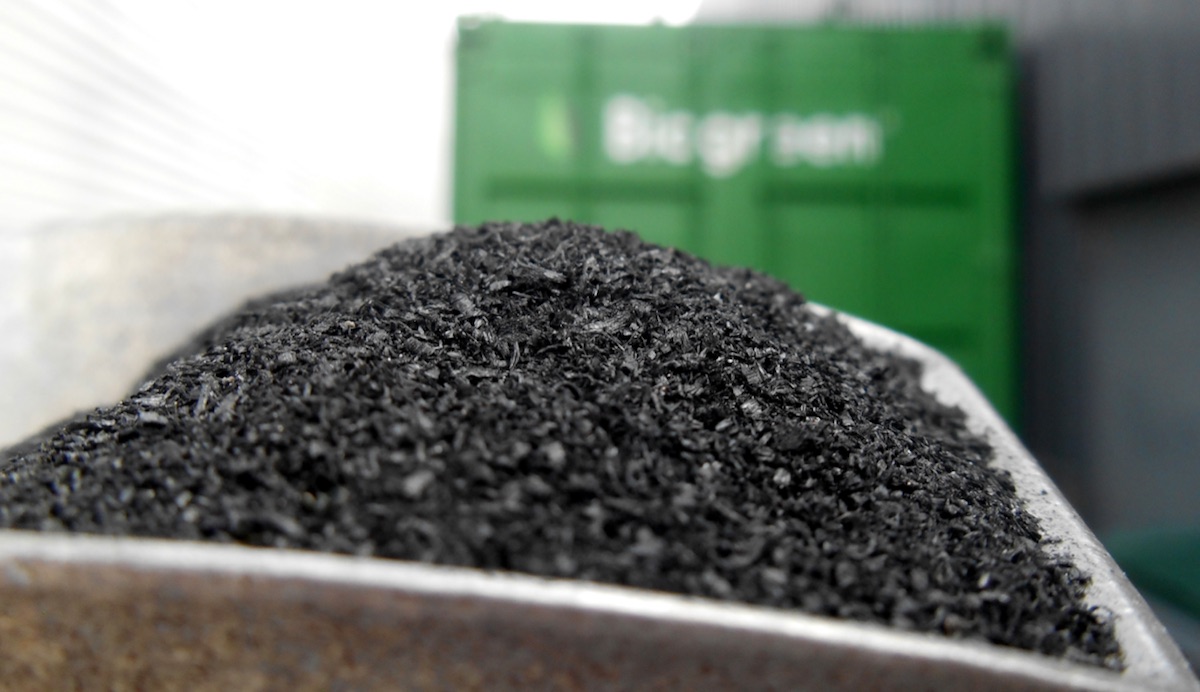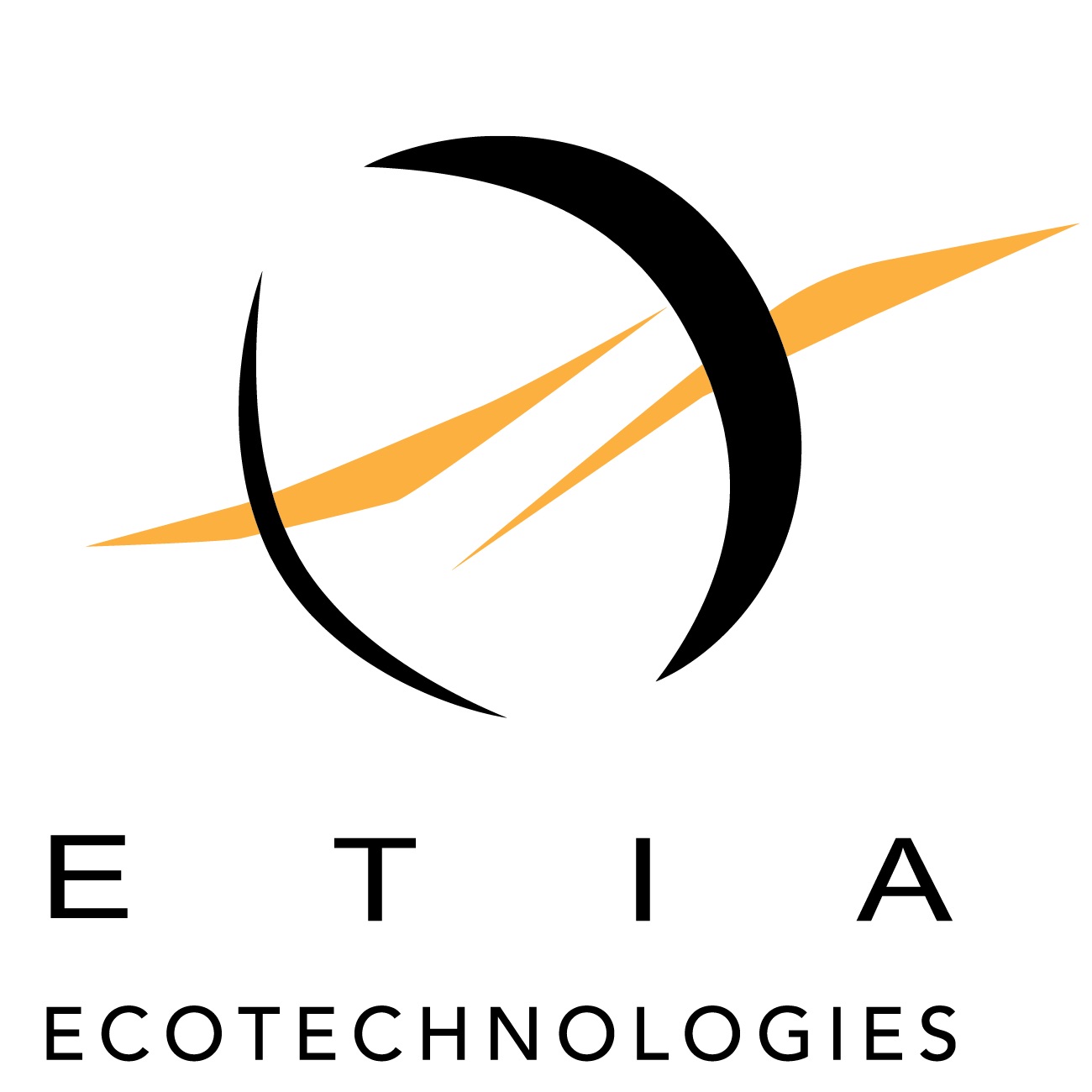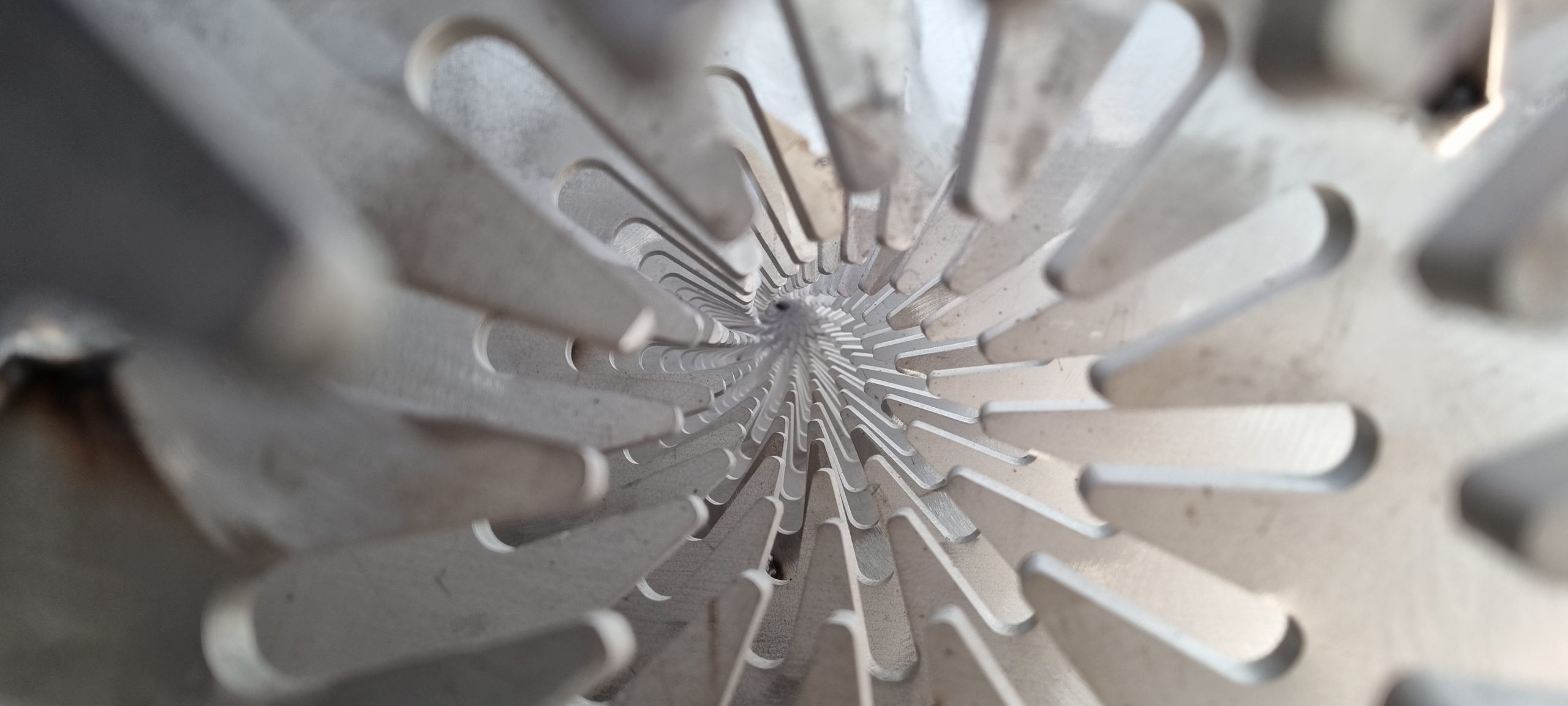
With so much going on in the industry, it can be difficult catching up with all possibilities.
Here’s our summary of Top 20 most exciting applications and business models for Biogreen® pyrolysis process.
Find out yours and let us know!
BIOMASS VALORISATION
Worldwide, great quantities of residual biomass are produced and are waiting for the sustainable methods of their further management. They are often sold as a fuel at relatively low market prices. However, the residual biomass can be an attractive resource to the Biogreen® pyrolysis process, offering many ways to create the higher added value of it and generate bio products with a big market demand. In Biogreen®, we call this process a biomass valorisation.
1.Biochar and heat / steam production
Pyrolysis allows converting clean wood biomass into biochar as a functional material (soil nutrient, bioremediation product, filtration material and many other). The possibility of changing the operating conditions in Biogreen® opens unique opportunity to produce your own functional material. In addition, produced energy from the process can be transformed into useful heat (for drying), steam (for industrial purposes) or other forms of power.
2. Biocoal and solid fuels production
The low-temperature process of biomass torrefaction and carbonization allow obtaining high-quality calorific fuel at LHV 21 to even 29 MJ/kg, suitable for the power generation markets. Thanks to adaptable treatment conditions of the Biogreen® system, process can be carried exactly according to the required properties of the solid fuel. Small quantities of calorific gas obtained in the process can be an additional resource for drying.

3. Liquid smoke applications
Standardised and controllable conditions of the pyrolysis in Biogreen® unit allow obtaining high-quality oil from wood biomass. After further refining, pyrolysis oil can be certified into many applications, among them, food flavors and food aromas markets. As an additional benefit, quality biochar and heat is obtained, which can be an added value to the project.
4. Wood vinegar production
Pyroligneous acid, also called wood vinegar, is a unique product that can be obtained in the process of pyrolysis of biomass when recovering the condensate from produced vapours. Its main components are acetic acid and methanol. Wood vinegar is a product widely used for pest repellent, for flowering plants, and soil improvement. As a bio-sourced material, it meets a rapidly increasing demand in the market worldwide. Simultaneous production of biochar and heat can be an additional benefit (see point 1).
5. Renewable, synthetic gases (H2, CH4)
Syngas obtained in the processes of biomass pyrolysis is a mix of interesting molecules, containing not only CO, CO2, and nitrogen, but also significant quantities of H2, CH4, and higher hydrocarbons. Additionally, the quantity of this molecules can be boosted by syngas post-treatment, making the process a useful source of bio molecules. ETIA is currently developing dedicated processes for this objective. Simultaneous production of biochar and oil can be an additional benefit to the business model.

Sewage sludge valorisation
Management of sewage sludge becomes an increasing problem for the environment. After the drying, Biogreen® pyrolysis treatment of sewage sludge opens a new route for the valorisation of this material into solid fuels or heat, without needless transportation and logistics linked to moving the sludge into big, centralised management centres.
6. Sludge carbonisation
Low or medium temperature pyrolysis of dry sewage sludge allows obtaining sterilized, odorless and easy to store product, that can be provided further as a renewable source of energy. Thanks to the Biogreen® adaptability of processing conditions, you can choose the degree of treatment in order not to overheat the material and keep its important fuel properties.
7. Sludge to heat
High-temperature pyrolysis is a process involving Biogreen® operating at temperatures of 800oC, aimed at the maximum decomposition of the sludge and generating as much as possible calorific syngas, that can be a source of energy for drying. Thanks to this type of treatment, Biogreen® can achieve high reduction rates and continuously produce energy to minimize the OPEX of your dryer.
Plastics and RDF/SRF valorisation
Plastic and plastic-containing waste are a global problem for the environment, which often needs to be addressed locally and on the small scale. Biogreen® provides a continuous, local solution to this problem right at the place it is needed, allowing to obtain added value products in form of power, syngas, and oil.
8. Plastics to oil, power and heat
Plastic debris is a material with high energy content that can be converted into high-quality syngas and oil. Syngas is a calorific blend of molecules (CH4, C2H6, H2 and other) that after cleaning can be efficiently converted into energy (steam, heat, electricity). Pyrolysis oil is a high energy blend of hydrocarbons which can be used further in many industries.
9. Plastics to heat – conventional fuel replacement in boilers
Operators of industrial gas boilers powered by natural gas often look for the possibility of reduction of conventional fuel costs. Pyrolysis can be a useful process for this objective. The high-temperature Biogreen® process allows obtaining synthetic gas at energy values comparable to natural gas. With a specially designed burner, you can replace natural gas in the existing boiler and continue operation without investment in new equipment, managing your own waste on site and taking the advantage of their energetic value.
10. RDF to power and heat
Pelletised, calorific fractions of municipal waste can be a perfect feedstock for the Biogreen® process. High-temperature continuous pyrolysis allows generating high qualities of syngas, which can be then provided into genset or CHP producing electricity, heat or steam. Oil and char from this process can be a potential benefit or off-product and need to be checked according to your own waste composition.
11. Plastics / RDF to hydrogen
This exclusive process remains under development of ETIA as one of the most promising waste valorisation directions in the future. Both plastics and RDF waste can be converted into quality syngas, which can be then treated further in order to boost its content of hydrogen. This special feature allows obtaining high quantities of renewable molecules from the low-value residues.
12. Plastics / RDF to methane
As one of developments with highest market potential, ETIA works on establishing the process to obtain renewable methane from calorific waste fractions. Setup combines the leading-edge technologies for high temperature pyrolysis (Biogreen®), gas purification and methanation processes in order to obtain methane suitable for injecting into transmission grid.

Rubber from end of life tires
In many places used tires are seen as a problematic waste material difficult to get rid of. Biogreen® technology is answering this problem by providing the possibility of local processing of rubber from used tires and creating valuable products from the pyrolysis conversion.
13. Recovered carbon black (reCB) and heat
Recovered carbon black is a material obtained from the solid product of tire pyrolysis process. Further treatment allows it to develop many useful properties that make reCB high added value product, which can be considered a filler for the rubber industry, paints and coatings, ink production, and many other industrial applications. Recycled carbon black produced in tire pyrolysis becomes increasingly popular, an environmentally friendly alternative to carbon black obtained from oil-based processes. In addition to that, Biogreen® pyrolysis allows obtaining a calorific mix of gases that can be a source of heat for your industrial processes and give extra source of income for your project.
14. Recovered carbon black (reCB) and CHP
Production of reCB (see above) can be combined with more advanced methods of using the syngas in order to generate the steam, heat, and electricity – depending on your individual demand. Continuous Biogreen® process combined with suitable auxiliary equipment can allow producing useful reCB as a functional material, steam and hot water for district heating.
Chemical processes
Potential usage of Biogreen reaches far more than the waste and biomass management industries. Our technologies are used widely in the chemical, pharmaceutical and food industries to obtain specific treatment of materials and increase their properties. Controllability of the Biogreen system allows obtaining specific and precise treatment conditions that would not be achievable with other conventional treatment.
15. Drying of chemical products
Many specific chemical substances require precise and continuous heat treatment in air limited atmosphere, which prevents them from oxidizing and other undesirable reactions. Precisely adapted conditions of Biogreen® allows the system to remove water, improve, carbonize and treat the chemical substances in a variety of ways.
Various materials
16. CCA treated wood valorisation
Chromated Copper Arsenate (CCA) treated wood is a dangerous waste obtained usually from used telephone poles, railway sleepers, silos, cable drums and all the type of industrially impregnated wood. As combustion of this material leads to releasing toxic gases and alternative treatment methods are in high demand. Pyrolysis of CCA wood can be a good answer for the increasing disposal problem allowing to recover energy and trap the pollutants in the solid residues.
17. Regeneration of activated carbon
Continuous pyrolysis in the Biogreen® process allows to evaporate variety of substances present in the material. This opens the possibility of regenerating polluted activated carbons. By the controllable increase of the temperature in air-restricted pyrolysis process, activated carbon can be cleaned from the volatile pollutants and reused again in your industrial facility.
18. Aluminium recovery
When the aluminum is present in waste, but combined with other materials like textiles, paper or plastics, pyrolysis process can help to efficiently remove the thermally degradable materials, leaving the aluminum suitable for recovery.
19. Aquatic plants valorisation
Aquatic plants and algae are an increasingly attractive feedstock for pyrolysis process. Potential production of added-value chemicals by using Biogreen® pyrolysis process provides an ecological and cost-effective solution to generate bio-sourced materials to the market.
20. Chemical sludge treatment
Pyrolysis of chemical sludges containing pollutants that would normally be oxidised and problematic in combustion processes is a promising answer to the growing challenges of this material disposal. The continuous process of Biogreen® can allow to thermally recover the energy carried in sludge, while keeping the dangerous substances trapped in the solid residue. Combining the system with gensets and CHP units can allow not only to recover the heat, but also produce useful steam and electricity.
Do you think your industry or community could use one of the above Biogreen® pyrolysis applications? Do not hesitate to drop us an email!



